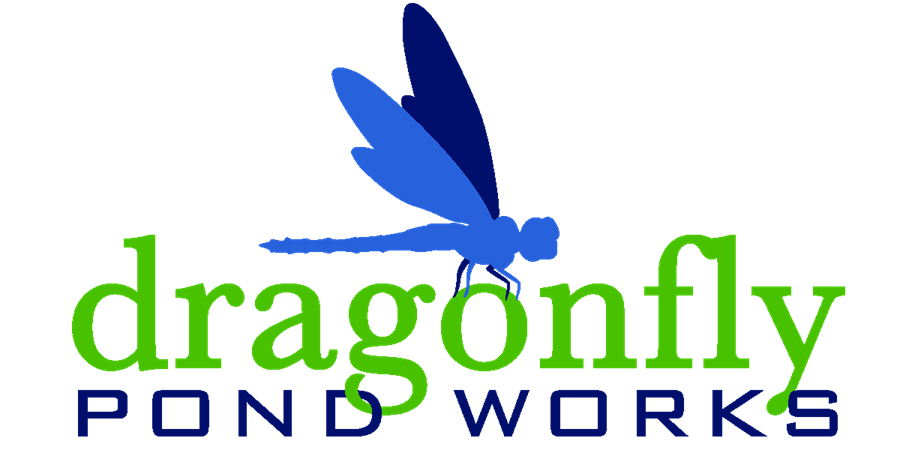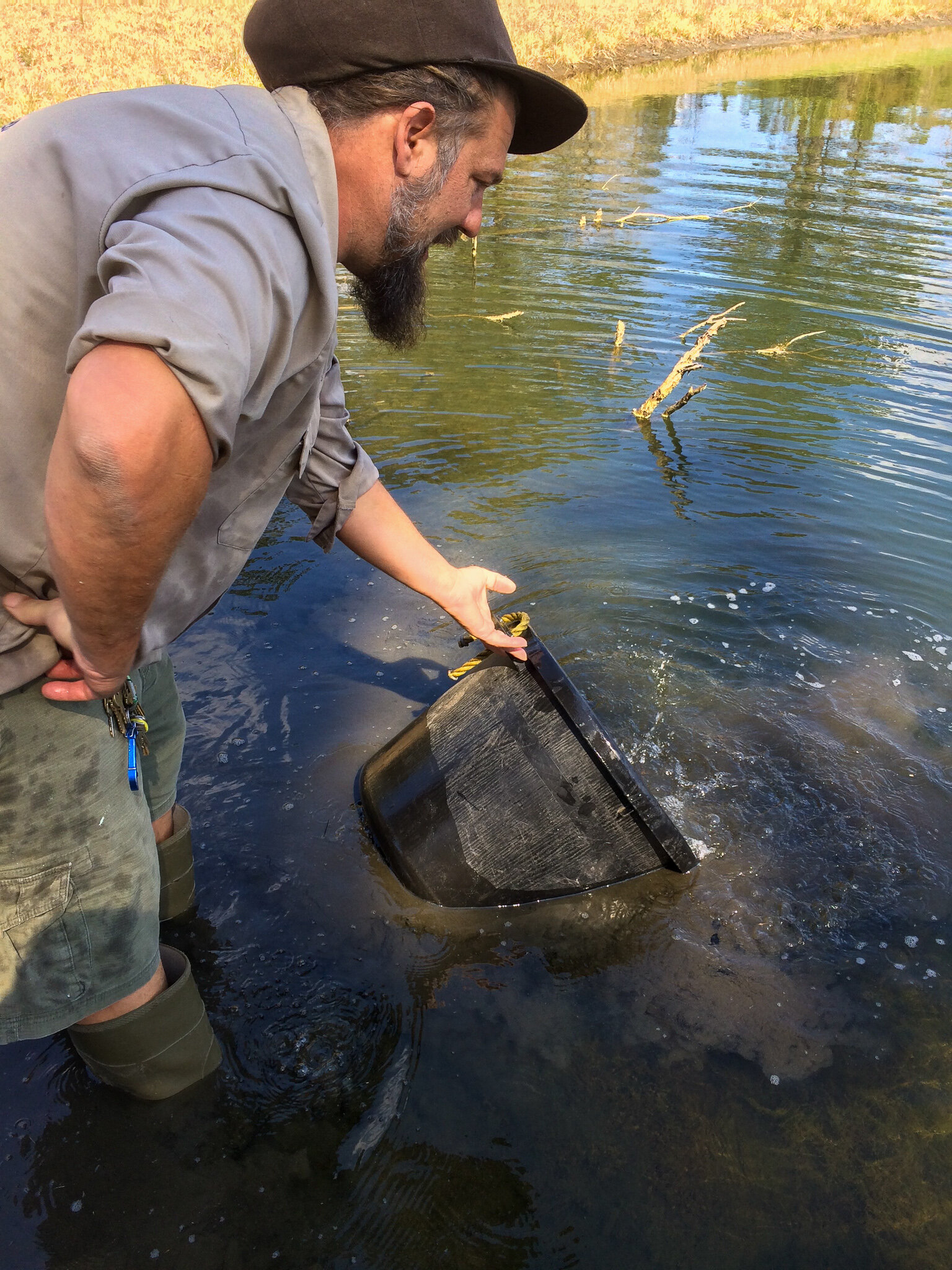Grass Carp: Stormwater Management Solution for Vegetation Control
Utilizing grass carp as part of a customized stormwater management plan.
Photo Credit: istock/wrangel
Grass carp. In the aquatics industry, these two words can spark a debate. I’ve heard real experts proclaim that using grass carp as a management tool will lead to either a great success story or a complete failure. Avoiding any middle ground can be convenient, but misguided. Pond management service providers excel at doing this. It is far easier to make the situation black or white, precut and prepackaged. The biological world has a different understanding, ecosystems are complex. To put it another way, if service providers were a song, they would want to be like a lullaby. Uncomplicated, easily repeatable, not controversial. Biology is more like Jazz, where deviation from the norm is common. Biology and jazz have similar survival mechanisms, adaptation and improvisation with variance, and they both terrify our grandparents. Lack of understanding around that variance is what ignites the debate. Grass carp are the consumer-based product that the experts try to precut and prepackage even though they conform to the rules of the biological world.
Benefits of Grass Carp in Stormwater Management
The benefits of grass carp are easily understood. They are a relatively cheap, ecologically friendly way to manage unwanted, submerged, aquatic vegetation. Grass carp can be an effective substitute for herbicide use. In stormwater control measures (SCMs) built for water quality, limiting the use of pesticides, even aquatically labeled ones, should be something we strive for. Herbicide applications typically do not lead to long-term control and require successive treatments over a growing season. Grass carp, with an average lifespan of 5-9 years, can provide extended control and exponentially reduce chemicals used over time.
The need to mitigate unwanted weed growth in stormwater control measures can be about aesthetics, but it is primarily about function. All stormwater ponds and constructed wetlands have a water quality orifice, where water is slowly released from the system, hopefully, cleaner and more controlled than when it came in. Stormwater control measures are built to funnel water toward this intentionally small opening. The entire design can be foiled by a patch of unaddressed, nuisance vegetation clogging the orifice. A clogged orifice causes an elevated water level, which could lead to erosion, kill established beneficial plantings, and generate conditions for a failed inspection. Grass carp, by proactively controlling excessive weed growth, could help prevent this and save a community thousands of dollars.
Before release, the fish are visually inspected for size and health.
Based on these benefits, grass carp can be a great management tool if used properly. However, like most solutions involving the varied dynamics of biology, if not used properly there can be drawbacks. These potential drawbacks are why it is important to utilize a specialized stormwater management expert. One criticism of Grass Carp is that although sterile, they are a non-native species. In some cases, they may prefer to consume native plants over non-native plants. Also, ecologically they are a riverine fish and tend to follow the flow of water. In SCMs designed to receive heavy water flow, grass carp could escape from a system with inadequate containment structures resulting in a loss of investment.
The grass carp are allowed to acclimate to the pond water before release.
Floating in-between the positives and negatives are the variations that we don’t fully understand. We understand broadly which vegetation types are preferred by grass carp, but there must be some more nuanced variation between individual fish that we are unaware of. Individual fish can eat at varied rates and types of vegetation can grow at varied rates. Unexpected mortality and predation are not easily predicted. Stocking a set number of grass carp alone could be setting yourself up for failure.
Importance of Customized Plans When Utilizing Grass Carp
Because of these positives, drawbacks, and unknowns, we prefer not to “sell” grass carp to our clients as standalone products. We like to utilize grass carp as a management tool in situations where they will directly benefit our clients. Tailoring the use of these fish according to each specific ecosystem with the ability to adapt and improvise according to onsite observations, produces a better return on the investment than adding X number of fish and hoping for the best. Our goal is to excel in developing Integrated Pest Management Plans and we believe that the most important word in that strategy is integrated. If it is not a combination of tools used, it is less effective than it could be and therefore less than our best efforts.
Once acclimated, the grass carp are released into the stormwater pond.
A routine maintenance plan with Dragonfly’s specialized stormwater experts will provide customized solutions, oversight on continued effectiveness, and the ability to adapt plans. If you are a consumer that desires a choice where you can choose 1 or 2, the decision should be based on approach, not on an individual product. The choice could be framed as - A. Comprehensive, Dynamic or B. Static, “one-size fits all”. The decision should be about embracing variation or rejecting it based on convenience. To say it in another way, the choice could be - A. Jazz or B. Lullabies. Our advice for managing your complex, dynamic ecosystem? Embrace jazz and ‘Take the A Train’. Please contact us to learn more about our customized stormwater solutions.
Learn More
Learn more about our use of Integrated Pest Management as part of comprehensive lake, pond, and stormwater maintenance plans. Read about the importance of routine maintenance to save money and avoid costly repairs, compliance violations, and/or fines.
Subscribe to our newsletter to receive informative, engaging, and exciting news delivered right to your inbox.
Like/Follow us on Facebook, Twitter, Instagram, and LinkedIn for news, events, engaging photos, puns, giveaways, and more!
Dragonfly Pond Works is a lake, pond, and stormwater management company. We provide services throughout North Carolina, in Raleigh, Durham, Charlotte, Cary, and Wilmington. Our services can also be found throughout Florida, in Tampa, St. Petersburg, Naples, Sarasota, Fort Myers, and Orlando. We also provide services in Myrtle Beach, Charleston, and Columbia, South Carolina, Atlanta, Athens, and Savannah Georgia. Please contact us to learn more.




